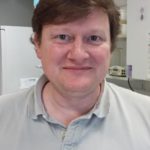Link to Pubmed [PMID] – 32150544
Link to HAL – Click here
Link to DOI – 10.1371/journal.pntd.0008072
PLoS Negl Trop Dis 2020 Mar; 14(3): e0008072
More than 200 million malaria clinical cases are reported each year due to Plasmodium vivax, the most widespread Plasmodium species in the world. This species has been neglected and understudied for a long time, due to its lower mortality in comparison with Plasmodium falciparum. A renewed interest has emerged in the past decade with the discovery of antimalarial drug resistance and of severe and even fatal human cases. Nonetheless, today there are still significant gaps in our understanding of the population genetics and evolutionary history of P. vivax, particularly because of a lack of genetic data from Africa. To address these gaps, we genotyped 14 microsatellite loci in 834 samples obtained from 28 locations in 20 countries from around the world. We discuss the worldwide population genetic structure and diversity and the evolutionary origin of P. vivax in the world and its introduction into the Americas. This study demonstrates the importance of conducting genome-wide analyses of P. vivax in order to unravel its complex evolutionary history.


